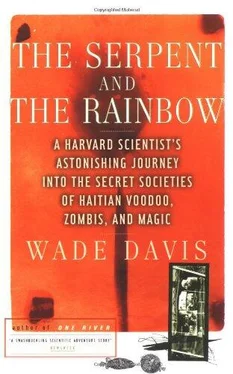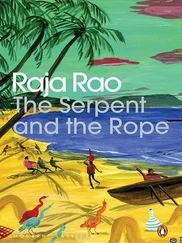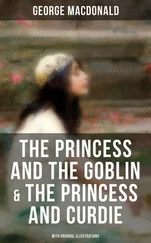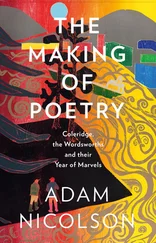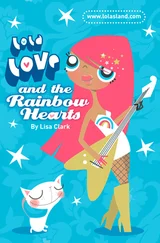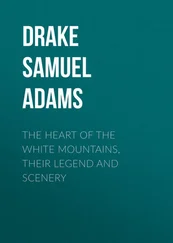Wade Davis - The Serpent and the Rainbow
Здесь есть возможность читать онлайн «Wade Davis - The Serpent and the Rainbow» весь текст электронной книги совершенно бесплатно (целиком полную версию без сокращений). В некоторых случаях можно слушать аудио, скачать через торрент в формате fb2 и присутствует краткое содержание. Год выпуска: 1985, Издательство: Simon & Schuster, Жанр: Старинная литература, на английском языке. Описание произведения, (предисловие) а так же отзывы посетителей доступны на портале библиотеки ЛибКат.
- Название:The Serpent and the Rainbow
- Автор:
- Издательство:Simon & Schuster
- Жанр:
- Год:1985
- ISBN:нет данных
- Рейтинг книги:5 / 5. Голосов: 1
-
Избранное:Добавить в избранное
- Отзывы:
-
Ваша оценка:
- 100
- 1
- 2
- 3
- 4
- 5
The Serpent and the Rainbow: краткое содержание, описание и аннотация
Предлагаем к чтению аннотацию, описание, краткое содержание или предисловие (зависит от того, что написал сам автор книги «The Serpent and the Rainbow»). Если вы не нашли необходимую информацию о книге — напишите в комментариях, мы постараемся отыскать её.
The Serpent and the Rainbow — читать онлайн бесплатно полную книгу (весь текст) целиком
Ниже представлен текст книги, разбитый по страницам. Система сохранения места последней прочитанной страницы, позволяет с удобством читать онлайн бесплатно книгу «The Serpent and the Rainbow», без необходимости каждый раз заново искать на чём Вы остановились. Поставьте закладку, и сможете в любой момент перейти на страницу, на которой закончили чтение.
Интервал:
Закладка:
Perhaps the most illuminating analysis of the evolution of the contemporary peasant society is the work of Murray, G. F., “The Evolution of Haitian Peasant Land Tenure: A Case Study in Agrarian Adaptation to Population Growth,” Ph.D. dissertation, Columbia University, 1977. Also of particular importance to me was: Fouchard, J., The Haitian Maroons-Liberty or Death , Edward W. Blyden Press, New York, 1981.
6. EVERYTHING IS POISON, NOTHING IS POISON
A good introduction to African religion may be found in Mbiti, J., African Religions and Philosophy , Anchor, New York, 1970. See also Parrinder, G., West African Religion , The Epworth Press, London, 1961. For a wonderful semipopular book see Watson, L., Lightning Bird—The Story of One Man’s Journey into Africa’s Past , Simon and Schuster, New York, 1982.
7. COLUMNS ON A BLACKBOARD
Notes on the plant ingredients are mentioned in a variety of sources including: Dalziel, J. M., Useful Plants of West Africa , London, 1937; Githens, T. S., Drug Plants of Africa , African Handbook 8, University of Pennsylvania Press, 1948. Sofowora, A., Medicinal Plants and Traditional Medicine in Africa , John Wiley & Sons, Chichester, England, 1982; Watt, J. M., and M. G. Breyer-Bandijk, Medicinal and Poisonous Plants of Southern and Eastern Africa , 2d ed., E. & S. Livingston, Ltd., Edinburgh, 1962.
Sources for the information on Bufo marinus came from: Abel, J. J., and David I. Macht, The poisons of the tropical toad Bufo aqua, Journal of the American Medical Association 56 (1911): 1531-36; Chen, K. K., and H. Jensen, A pharmacognostic study of ch’an su, the dried venom of the Chinese toad, Journal of the American Pharmaceutical Association 23 (1929): 244-51; Fabing, H. S., Intravenous bufotenine injection in the human being, Science 123 (1956): 886-87; Flier, J., M. Edwards, J. W. Daly, C. Myers, Widespread occurrence in frogs and toads of skin compounds interacting with the ouabain site of Na +, K +, ATPase, Science 208 (1980): 503-5; Kennedy, A. B., Ecce Bufo: the toad in nature and Olmec iconography, Current Anthropology 23, no. 3 (1982): 273-90.
Reports of Bufo marinus as a possible hallucinogen include: Dobkin de Rios, M., The influence of psychotropic flora and fauna on the Maya religion, Current Anthropology 15 (1974): 147-52; Furst, P., Symbolism and psychopharmacology: the toad as earth mother in Indian America, XII Mesa Redonda—Religion en Mesoamérica , Mexico: Sociedad Mexicana de Antropología, 1972; Hamblin, N., The magic toads of Cozumel, paper presented at the 44th annual meeting of the Society for American Archaeology, Vancouver, B.C., 1979. See also Kennedy (1982). Tim Knab has described his experiences in an unpublished manuscript: Knab, T., Narcotic use of toad toxins in southern Veracruz, n.d.
The quote from Ian Fleming comes from page 248 of From Russia with Love , Berkley Books, New York, 1982.
There is an enormous literature on the puffer fish. Perhaps the best overview is provided in the excellent paper by C. Y. Kao, Tetrodotoxin, saxitoxin and their significance in the study of excitation phenomenon, Pharmacological Reviews 18, no. 2 (1966): 997-1049. An invaluable overview and summary of the symptoms of tetrodotoxin poisoning is provided in: Halstead, B. W., Poisonous and Venomous Marine Animals of the World , Darwin Press, Princeton, NJ, 1978. My own scientific findings are presented in: Davis, E. W., The ethnobiology of the Haitian zombi, Journal of Ethnopharmacology 9, no. 1 (1983): 85-104, and Davis, E. W., Preparation of the Haitian zombi poison, Botanical Museum Leaflets—Harvard University 29, no. 2 (1983): 139-49. For a complete list of references see Kao (1966) and Halstead (1978). Some of the most important papers referred to in my 1983 papers are:
Akashi, T. Experiences with fugu poisoning. Iji Shimbum 27 (1880): 19-23.
Clavigero, F. J. The History of (Lower) California . S. E. Lake and A. A. Gray, eds. Stanford University Press, Stanford, 1937.
Fukada, T. Puffer fish poison and the method of prevention. Nippon Iji Shimpo 762 (1937): 1417-21.
________. Violent increase of cases of puffer poisoning. Clinics and Studies 29, no. 2 (1951): 1762.
Fukada, T., and I. Tani. Records of puffer poisonings. Report 1. Kyusha University Medical News 11, no. 1 (1937): 7-13.
_______. Records of puffer poisonings. Report 2. Iji Eisei 7, no. 26 (1937): 905-7.
_______. Records of puffer poisonings. Report 3. Nippon Igaku Oyobi Kenko Hoken 3258 (1941): 7-13.
Halstead, B. W., and N. C. Bunker. The effects of commercial canning process upon puffer poisoning. California Fish and Game 39, no. 2 (1953): 219-28.
Hashimoto, Y. Marine Toxins and Other Bioactive Marine Metabolites . Japanese Scientific Societies Press, Tokyo, 1979.
Kawakubo, Y., and K. Kikuchi. Testing fish poisons on animals and report on a human case of fish poisoning in the South Seas. Kaigun Igakukai Zasshi 31, no. 8 (1942): 30-34.
Mosher, H. S., F. A. Fuhrman, H. D. Buchwald, H. G. Fischer. Tarichatoxin-Tetrodotoxin: a potent neurotoxin. Science 144 (1964): 1100-1110.
Noniyama, S. The pharmacological study of puffer poison. Nippon Yaku-butsugaku Zasshi 35, no. 4 (1942): 458-96.
Tani, I. Seasonal changes and individual differences of puffer poison. Nippon Yakubutsugaku Zasshi 29, nos. 1-2 (1940): 1-3.
Yano, I. The pharmacological study of tetrodotoxin. Fukuoka Med. Coll . 30, no. 9 (1937): 1669-1704.
An informative popular article on the Japanese puffer fish, written by Noel Vietmeyer, appeared recently in National Geographic 163, no. 2 (August 1984): 260-70.
8. VOODOO DEATH
The Victorian concerns with premature burial, the protective measures they took, and a marvelous description and sketch of Count Karnice-Karnicki’s invention are outlined in: Hadwen, W. R., Premature Burial—And How It May Be Prevented , Swan Sonnenschein & Co., Ltd., London, 1905. A number of historical incidences involving premature burial are mentioned in MacKay, G. E., Premature burials, The Popular Science Monthly 16, no. 19 (1880): 389-97. Other publications of the era were Fletcher, M. R., One Thousand Buried Alive by Their Best Friends , 1890, and Hartmann, F., Buried Alive , 1895, both of which were published in Boston. The Townsend case is discussed in Kastenbaum, R., and R. Aisenberg (1972) and mentioned in Watson, L. (1974).
The anthropological literature on voodoo death includes:
Cannon, W. B. Voodoo death. American Anthropologist 44 (1942): 169-81.
Cawte, J. Voodoo death and dehydration. American Anthropologist 83 (1983): 420-42.
Clune, F. J. A comment on voodoo deaths. American Anthropologist 75 (1973): 312.
Eastwell, H. D. Voodoo death and the mechanism for dispatch of the dying in East Arnhem, Australia. American Anthropologist 84 (1982): 5-18.
Glascock, A. P. Death-hastening behavior: an explanation of Eastwell’s thesis. American Anthropologist 85 (1983): 417-20.
Lester, D. Voodoo death: some new thoughts on an old phenomenon. American Anthropologist 74, no. 3 (1972): 386-90.
Lex, B. W. Voodoo death: new thoughts on an old explanation. American Anthropologist 76, no. 4 (1974): 818-23.
The medical cases of patients surviving near-death experiences (NDE) came from Sabom, M. B., Recollections of Death-A Medical Investigation , Simon and Schuster, New York, 1982. The phenomenon is also discussed in Kubler-Ross, E., On Death and Dying , Macmillan, New York, 1969.
Читать дальшеИнтервал:
Закладка:
Похожие книги на «The Serpent and the Rainbow»
Представляем Вашему вниманию похожие книги на «The Serpent and the Rainbow» списком для выбора. Мы отобрали схожую по названию и смыслу литературу в надежде предоставить читателям больше вариантов отыскать новые, интересные, ещё непрочитанные произведения.
Обсуждение, отзывы о книге «The Serpent and the Rainbow» и просто собственные мнения читателей. Оставьте ваши комментарии, напишите, что Вы думаете о произведении, его смысле или главных героях. Укажите что конкретно понравилось, а что нет, и почему Вы так считаете.
